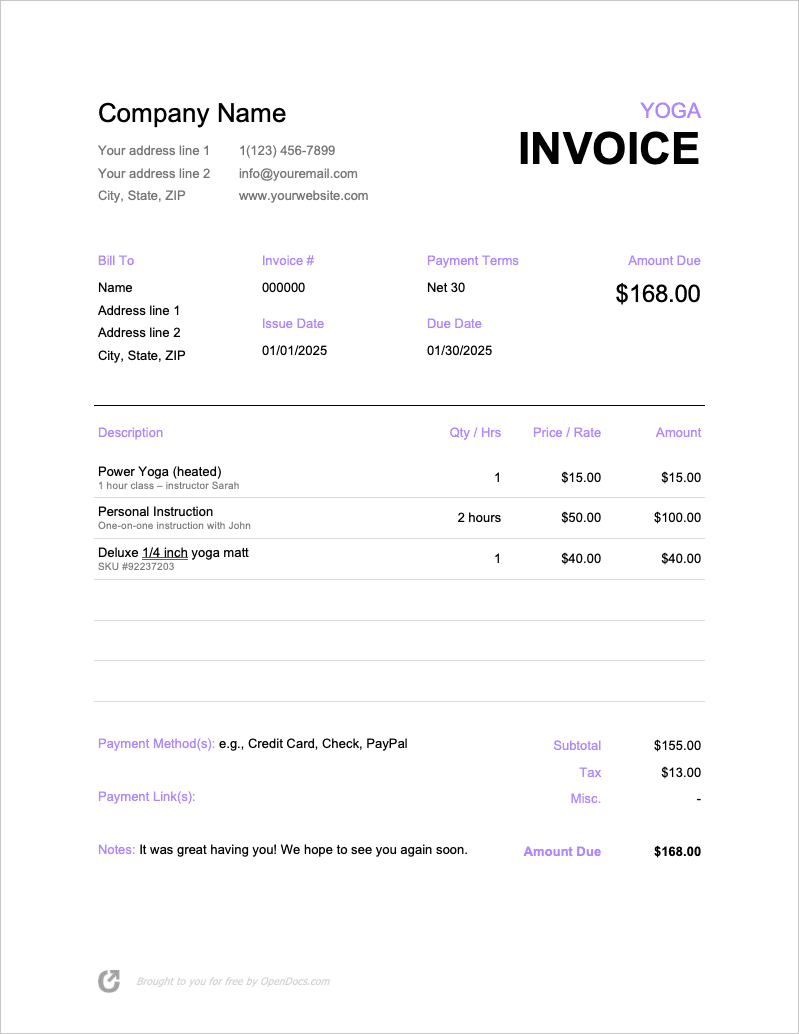Yoga Invoice Template
A yoga invoice is a form used for charging customers for yoga classes and/or yoga-related products. Billing can occur on a one-time or reoccurring basis, depending on the type of package purchased. If recurring, the invoice can be issued on a monthly basis, listing all of the classes that were attended in that span of time and the total amount that is owed. The form includes a “Terms” field that allows the company (or teacher) to require payment to be due immediately or within a specific timeframe, such as thirty (30) days.
Tips for Invoicing Yoga Clients
Consider the following tips when completing an invoice for a client.
1. Company/Instructor or Client Personal Information
Fill in the company or individual’s phone number, email, website, address, city/state, and zip code. Include the client’s name, address, city/state, and zip code, as well. Enter the invoice number and issue date to confirm its details.
2. Description of Services
Describe the yoga class (e.g., Bikram, Yin, Jivamukti yoga) under the “Description” section. The instructor can also include where the session occurred, such as the studio, gym, home, outdoors, or virtually.
3. Set a Rate
Various factors affect yoga class rates. The type of class and its location can determine the amount that a client owes. If the instructor has to travel a long distance to reach the facility, they may charge an additional fee. However, the main factor that contributes to the price is the length of the session. The classes typically last 45-, 60-, 90, or 120-minutes. Most commonly, instructors charge an hourly rate between $30 and $75.
The fees vary if the client is attending their first session or if they buy one class versus a bundle. If they purchase more sessions, the company or instructor may discount the total as an incentive for the customer to buy. The number of people attending the class can cause the price to fluctuate, as well. If more students attend, then each person would pay less for the service.
4. Client Insurance
While insurance does not typically cover yoga classes, instructors should educate themselves on how to handle these types of transactions. In most cases, the client will be responsible for reimbursement if they have a health savings account (HSA), health reimbursement arrangement (HRA), or flexible spending arrangement (FSA). People who have been in an auto accident or receive worker’s compensation can also receive money for yoga therapy. Having a set insurance policy beforehand can make this process more straightforward.
